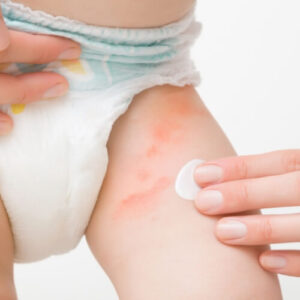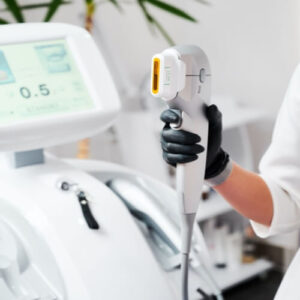What is silent reflux in babies?
Acid reflux is common in babies during their first two months of life, and most babies usually spit up some milk. Silent reflux in babies It’s a type of acid reflux. The child does not spit out the contents of the refluxed stomach, but it goes from the esophagus to the throat, then the throat, and maybe the nose without it coming out of the mouth, and the child. may swallow it again. [1]
Silent reflux causes pain to the baby; This makes him cry a lot and feed less, and silent reflux in babies is usually initially diagnosed as colic. [1]
Learn about silent GERD symptoms in babies, their causes, as well as ways to treat silent reflux in newborns and infants.
Symptoms of silent reflux in babies
usually not Silent reflux in newborns and infants accompanied by spitting (spitting) or reverse vomiting Gastroesophageal reflux diseaseBut inclusive Signs of silent reflux in babies the following: [1] [2]
- hoarseness.
- A chronic cough that may resemble barking.
- Crying and irritability.
- Back arch while breastfeeding.
- Difficulty feeding or inhaling food.
- Refusal to breastfeed.
- Noisy breathing or shortness of breath.
- narrowing of the airways;
- Slow weight gain
It should be noted that it is common for babies to spit up, but breathing or feeding problems may indicate a more serious health problem that warrants a doctor’s visit. [3]
Also read: GERD symptoms in babies
Causes silent reflux in babies
The reasons includeSilent reflux in babies the following: [4]
- Incomplete development of the esophageal sphincter in children at birth.
- The baby remains most of the time lying down, especially in the first three months; This facilitates the reflux of stomach contents into the esophagus.
- A diet based on liquids, especially in the first months, contributes to reflux.
Risk factors for silent reflux in infants
There are risk factors that increase the likelihood of silent GERD in infants, including: [4]
Also read: Gastroesophageal reflux disease causes: know
Diagnosis of silent reflux in infants
The doctor begins to diagnose silent reflux in babies by knowing the medical history and then performs a comprehensive physical examination of the child. [3]
In addition, doctors do not recommend doing contrast tests for babies and small children, but sometimes it may be necessary Endoscopy When one of the following symptoms is present: [3]
- difficulty swallowing;
- Refusal to breastfeed.
- Delayed growth without vomiting.
- Unexplained shortness of breath.
An esophageal pH test may also be required. [2]
Also read:
How do you prevent the children from getting cold in the winter?
Our country is generally considered to have a temperate climate, but some areas get very cold in winter, when the temperature drops to… read more
Silent reflux treatment for babies
Treatment of silent reflux in infants depends on making lifestyle adjustments, including: [2] [4]
- Hold the baby upright after feeding for 30 minutes.
- Burping the baby several times during and after feeding.
- Be sure to hold the feeding bottle at the correct angle so that the nipple fills with milk, as this reduces the child’s swallowing of air, which in turn leads to increased pressure on the intestines and possibly reflux.
- Choose an appropriate nipple to make sure the baby’s mouth is firmly attached to it.
- Feed your baby in small amounts several times and not in large amounts.
- Change the mother’s diet if she is breastfeeding her child by avoiding foods that increase the child’s symptoms.
- Use of medications to treat silent reflux in babies in some cases, such as histamine-2 blockers or Proton pump inhibitors according to the doctor’s order.
Surgical treatment of silent GERD in infants may be used in severe cases or caused by a hiatal hernia. [2]
Also read: Types and degrees of gastroesophageal reflux disease
Complications of silent reflux in infants
Frequent reflux of stomach acid into the throat and larynx can lead to serious long-term complications.
include Complications of silent reflux in children and infants the next: [2]
- Chronic sore throat.
- Ulcers in the throat and larynx.
- Middle ear infection cyclic.
- Fluid accumulation in the middle ear.
It is worth noting that there is believed to be a connection between silent reflux in babies and frequent ear infections and sinusitis. [2]
Hello, my 7-year-old son had a small tumor in his shoulder a year ago and over time it started to grow. I showed the doctors and they all agreed it was a benign tumor the pediatric surgeon told me it was pilomatrixum and scheduled him for surgery in February, but now he has the same problem elsewhere, Zend Is the reappearance of the hand related to other serious causes?





